14 Companion Plants for Sweet Potatoes (With Pictures)
-
Pete Ortiz
- Last updated:
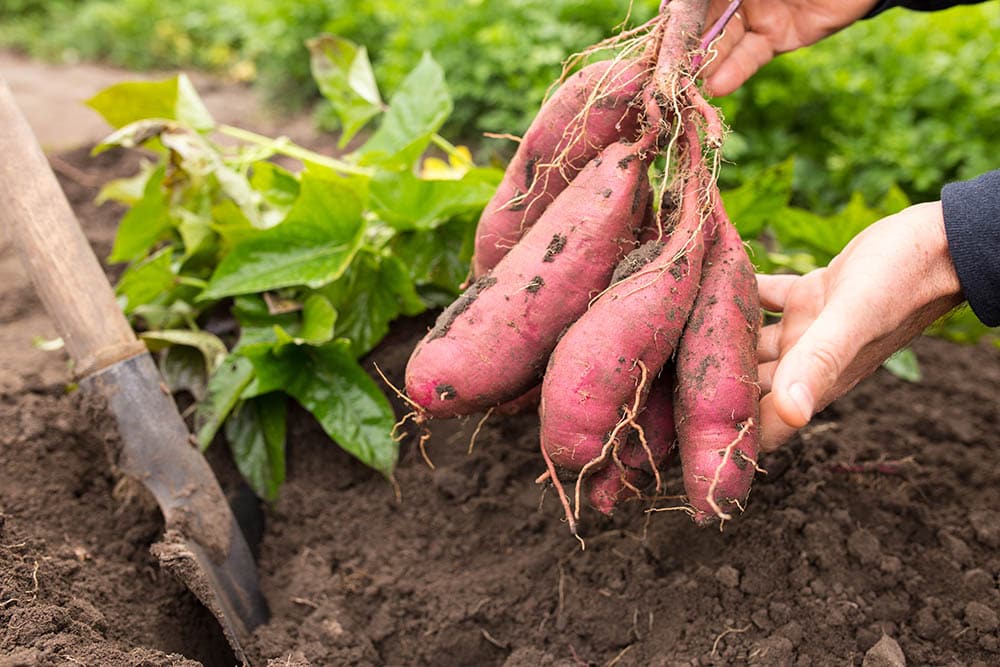
Every great gardener knows that getting the most out of your crops depends on what you plant near your crops. Picking the right companion plants can be a tricky business. Some plants will destroy yields, while others that might seem like a more questionable pairing will help both plants thrive.
It’s a lot to take in, so we wanted to make things easy for you and highlight a few great options you have to pick from. When you’re looking to get the most out of your sweet potato plants, these 14 companion plants will go a long way in helping you get there.
The Top 14 Companion Plants for Sweet Potatoes
1. Garlic
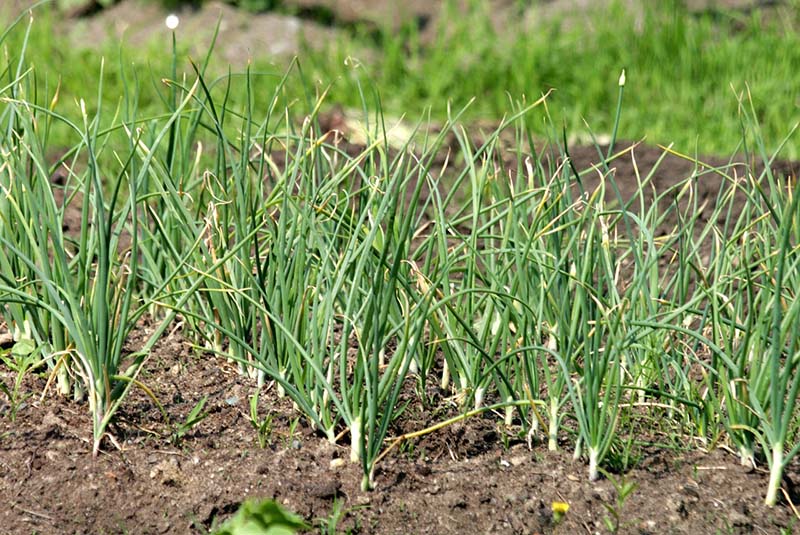
| Benefits: | Attract pollinators, weevil and sweet potato flea beetle deterrent, and root-knot nematode deterrent |
| Spacing: | 6 inches |
| USDA Zone: | 1 to 5 |
While not too many people think about growing their garlic, there’s no denying that it’s one of the best companion plants for sweet potatoes out there. The scent of garlic helps attract pollinators and deters pests that normally seek out sweet potatoes.
Those pests include weevils, sweet potato flea beetles, and root-knot nematodes, all of which could typically wreck an entire sweet potato harvest. Putting a few garlic plants around your sweet potatoes can go a long way.
2. Parsnips
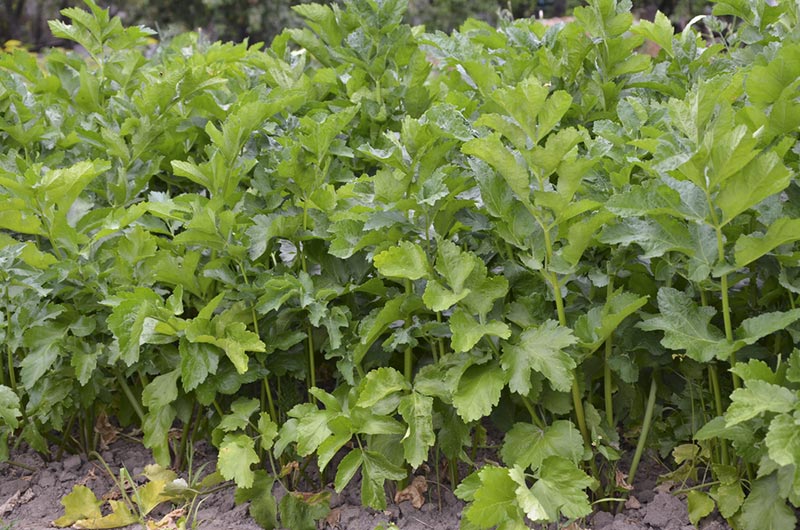
| Benefits: | Breaks up compacted soil and deters potato bugs |
| Spacing: | 18–24 inches |
| USDA Zone: | 2 to 9 |
While sweet potatoes are root vegetables themselves, they do great with other root vegetables in the area. Parsnips are a great choice, as they break up compacted soil and help deter common pests for sweet potatoes, like the potato bug.
Just leave enough space between parsnips and sweet potatoes, because while they work great together, they also take up the same ground space. Put them too close and they’ll overcrowd each other, limiting the growth of both plants.
3. Thyme
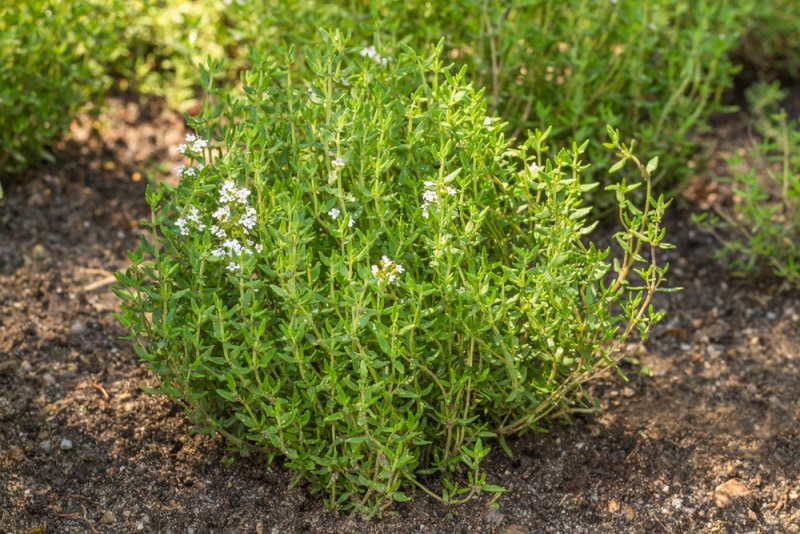
| Benefits: | Attracts hoverflies, deters flies, thrips, spider mites, hornworms, and other pests |
| Spacing: | 12–24 inches |
| USDA Zone: | 2 to 5 |
Thyme is a great herb that grows extremely well near sweet potatoes. Thyme attracts hoverflies, and hoverflies eat just about everything that tries too much down on sweet potatoes. Not only do they attract hoverflies, but they actively deter other pests like flies, thrips, spider mites, and hornworms.
If you’re trying to keep pests away from your sweet potatoes, a few thyme plants might be the perfect solution. Just keep in mind that if you’re looking to grow them as a perennial, you need to be in an area between USDA zones 2 and 5.
4. Onions
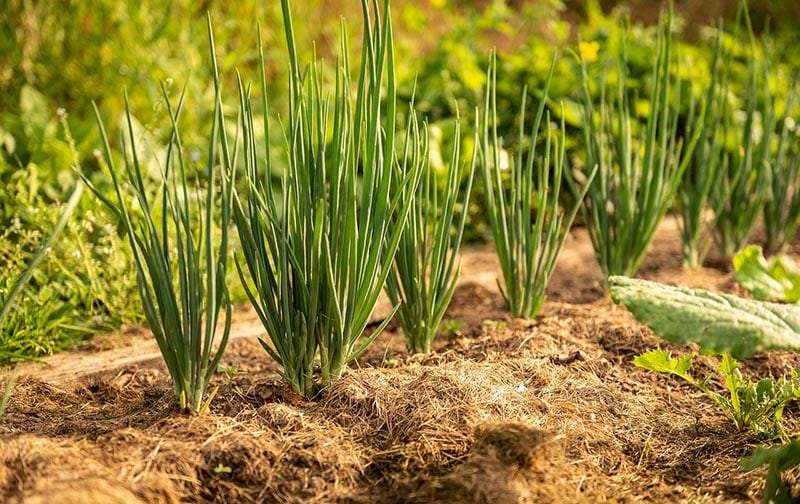
| Benefits: | Attract pollinators, weevil and sweet potato flea beetle deterrent, and root-knot nematode deterrent |
| Spacing: | 13–15 inches |
| USDA Zone: | 5 to 13 |
Onions fall under a larger group called alliums, and just about any allium does great with sweet potatoes. That’s because alliums have stronger scents that attract pollinators.
Not only that but since the smell is so strong, it masks the smell of the sweet potatoes from insects and other bugs that would want to eat them. This helps keep sweet potato flea beetles, weevils, and root-knot nematodes away from your sweet potatoes while they grow.
5. Chives

| Benefits: | Attract pollinators, weevil, and sweet potato flea beetle deterrent, and root-knot nematode deterrent |
| Spacing: | 6–12 inches |
| USDA Zone: | 3 to 10 |
If you just looked at the part of the plant growing outside the ground, you wouldn’t notice much of a difference between a chive and an onion. That’s because they both belong to the same plant family: alliums.
Just like onions and garlic, chives give off a strong scent that attracts pollinators while masking the scent of the sweet potatoes from pests. You don’t need all three alliums in your garden, but simply adding one will go a long way in protecting your sweet potato plants.
6. Bush Beans

| Benefits: | Replaces soil nitrogen and provides limited shade |
| Spacing: | 24–36 inches |
| USDA Zone: | 2 to 11 |
Sweet potatoes pull a lot of nitrogen from the soil, and while you can replenish this nitrogen with fertilizer, plants like bush beans will help do the same thing. Not only do they help replenish nitrogen in the soil, but they also provide limited shade for the sweet potato leaves.
Legumes like bush beans are a great choice for planting near-sweet potatoes. Plus, you get the bean harvest that you can put into various meals!
7. Basil
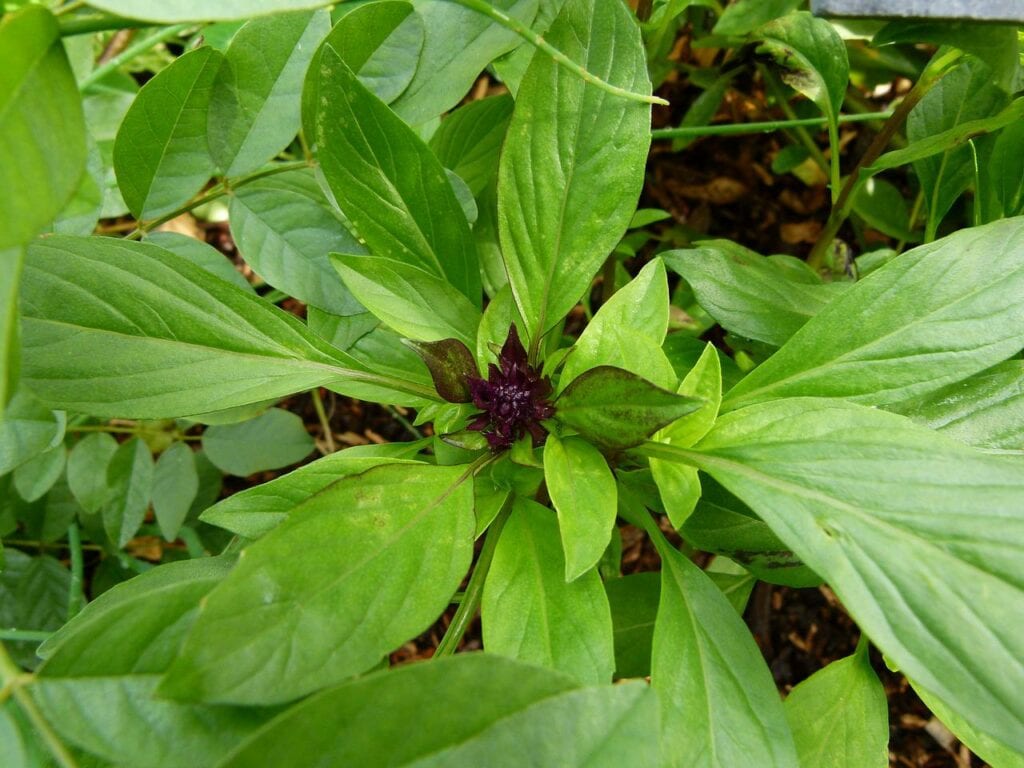
| Benefits: | Attracts hoverflies, deters flies, thrips, spider mites, hornworms, and other pests |
| Spacing: | 12–18 inches |
| USDA Zone: | 10 to 11 |
Basil is another excellent herb you can grow near sweet potatoes, but if you want it as a perennial, you need to live in a much warmer climate. They only thrive in zones 10 and 11, but you can keep them out in pots during the summer months and get many of the same benefits.
They attract hoverflies to the area, and those hoverflies eat pests like aphids. Moreover, basil helps deter flies, thrips, spider mites, and hornworms, which are all common pests for sweet potatoes.
8. Peas
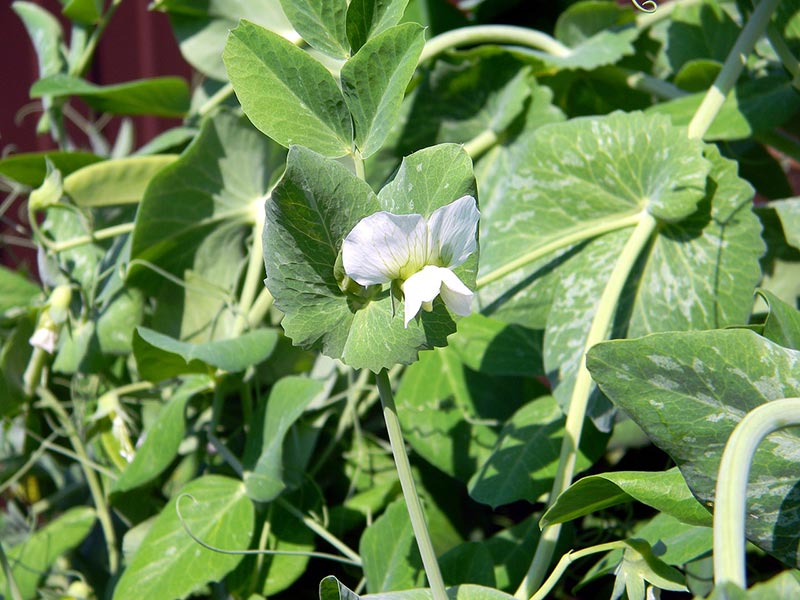
| Benefits: | Replaces soil nitrogen and provides limited shade |
| Spacing: | 18 inches |
| USDA Zone: | 3 to 11 |
Peas are another member of the legume family, and with the limited shade they provide, they’re great to keep around sweet potatoes. They not only take on the direct sunlight the sweet potatoes don’t want, but they also actively replace the nitrogen in the soil that the sweet potatoes use to grow. If you grow peas with your sweet potatoes you’ll increase the yield of both plants, which is exactly what you’re looking for with a companion plant!
9. Dill
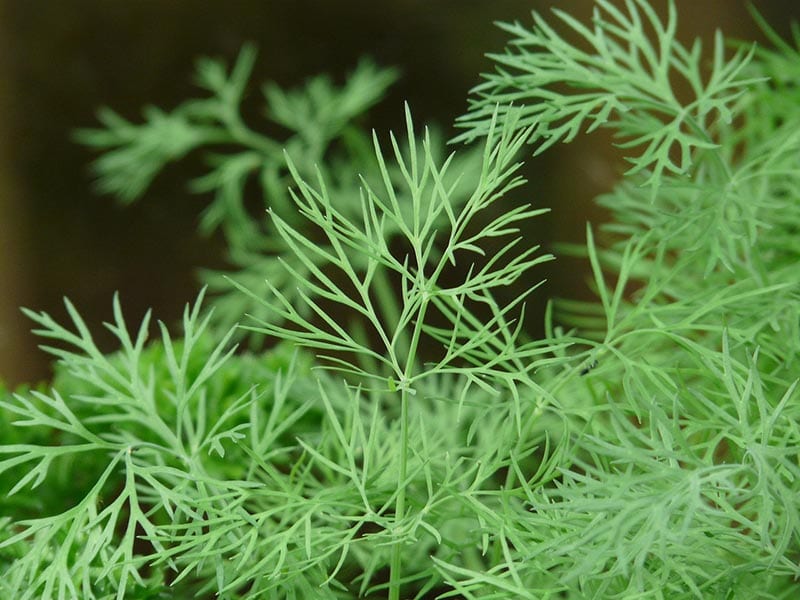
| Benefits: | Attracts hoverflies, deters flies, thrips, spider mites, hornworms, and other pests |
| Spacing: | 12 inches |
| USDA Zone: | 3 to 11 |
Dill is yet another herb that provides plenty of benefits for sweet potatoes. They attract hoverflies which eat many of the harmful pests for sweet potatoes, and they deter flies, thrips, spider mites, hornworms, and other pests.
Even better, while many herbs require very specific USDA zones to thrive, with dill you can grow it as a perennial in USDA zones 3 to 11 without much trouble.
10. Oregano

| Benefits: | Deters pests |
| Spacing: | 8–10 inches |
| USDA Zone: | 4 to 10 |
Oregano isn’t the best choice compared to some of the other herbs you can pair up with sweet potatoes. While other herbs provide more benefits, you shouldn’t write off oregano entirely. Oregano will help deter a wide array of pests, and if you like oregano in different recipes, you’ll also get plenty of this great herb to use!
11. Alyssum
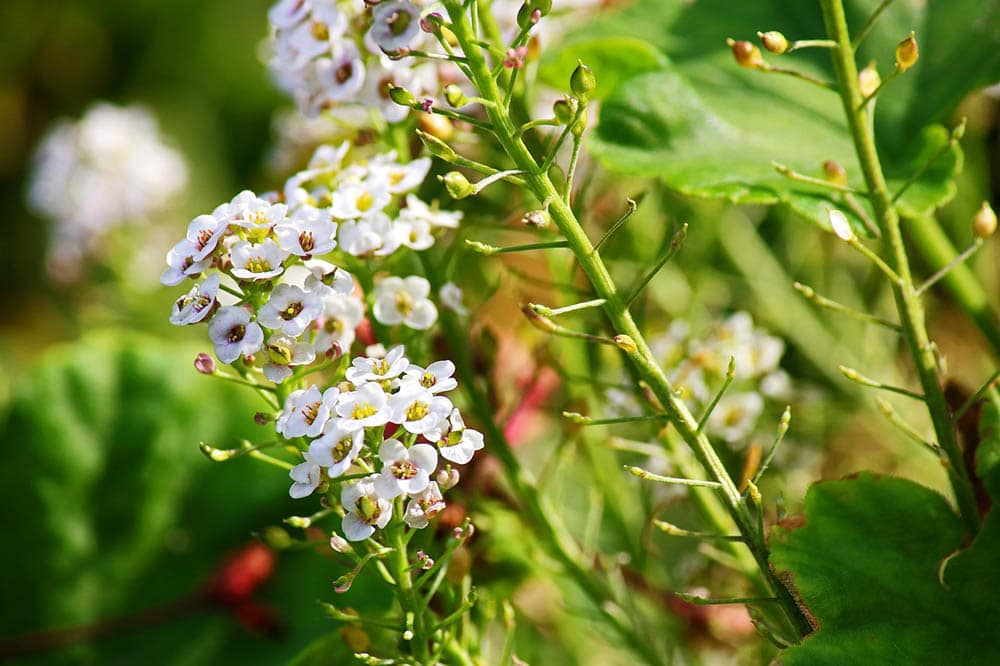
| Benefits: | Attracts lacewing, predatory insects, and pollinators |
| Spacing: | 6 inches |
| USDA Zone: | 5 to 9 |
Alyssum isn’t a plant that gives you any additional vegetables or fruits, but the ground cover it provides for the sweet potatoes helps improve their yields. Alyssum attracts lacewings, which chow down on aphids. It also helps prevent the spread of weeds in your garden.
Moreover, alyssum brings plenty of pollinators to your garden, making it a beneficial companion plant to just about everything you’re growing there.
12. Beets

| Benefits: | Repels flea beetles, breaks up compacted soil, and deters potato bugs |
| Spacing: | 12–18 inches |
| USDA Zone: | 2 to 11 |
Beets are another root vegetable that pairs great with sweet potatoes, as long as you don’t plant them too close together. Beets help break up compacted soil, and they help repel both flea beetles and potato bugs.
These are both great things for sweet potatoes, and since you can grow them in USDA zones 2 to 11, you can pretty much grow them wherever you’re growing sweet potatoes.
13. Pole Beans
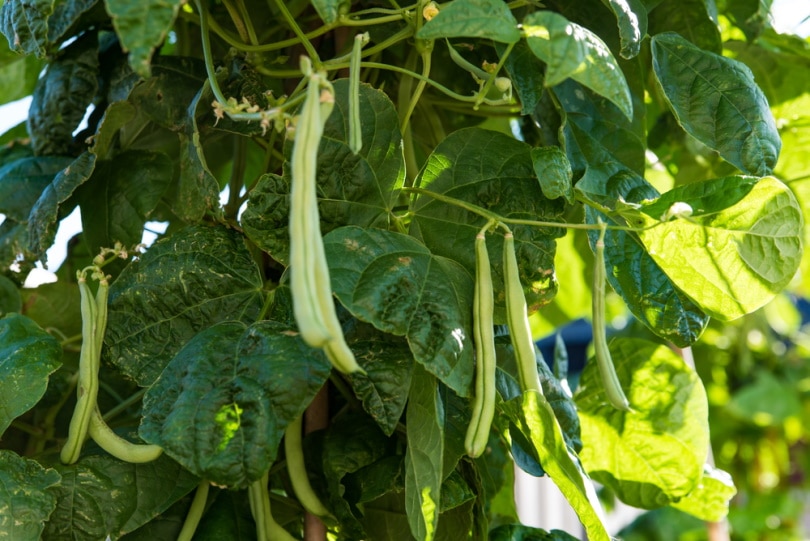
| Benefits: | Replaces soil nitrogen and provides limited shade |
| Spacing: | 6 inches |
| USDA Zone: | 3 to 11 |
Legumes are great companions for sweet potatoes. Pole beans fall under the legume family, providing many of the same benefits that other legumes provide for sweet potatoes.
While sweet potatoes are stripping nitrogen from the soil to help them grow, pole beans help counteract this by pumping nitrogen back into the soil. You can also train pole beans to intertwine and grow around sweet potatoes, maximizing the shade potential without harming either plant.
14. Spinach
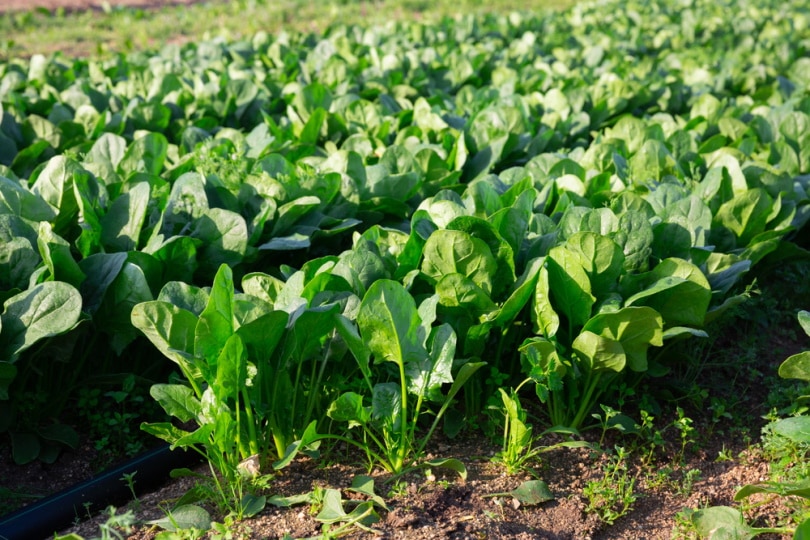
| Benefits: | Provides ground cover, helps prevent soil erosion, and improves yield |
| Spacing: | 8–12 inches |
| USDA Zone: | 5 to 10 |
Sweet potatoes are root vegetables that grow underground, but that doesn’t mean they won’t benefit from some cover. Spinach and lettuce are great options for this, and you get the leafy plants to eat, too! It helps that both these plants have very shallow root networks, so they’re not really competing for the same space or nutrients.
Meanwhile, spinach and lettuce provide some cover for the sweet potatoes, which helps them grow and improves the overall yield.
The 3 Worst Companion Plants for Sweet Potatoes
While the 14 plants we highlighted above will help your sweet potato plants thrive in your garden, if you add any of these three, you’re asking for trouble. Do your best to keep any of these three plants far away from any sweet potatoes you’re growing.
1. Tomatoes
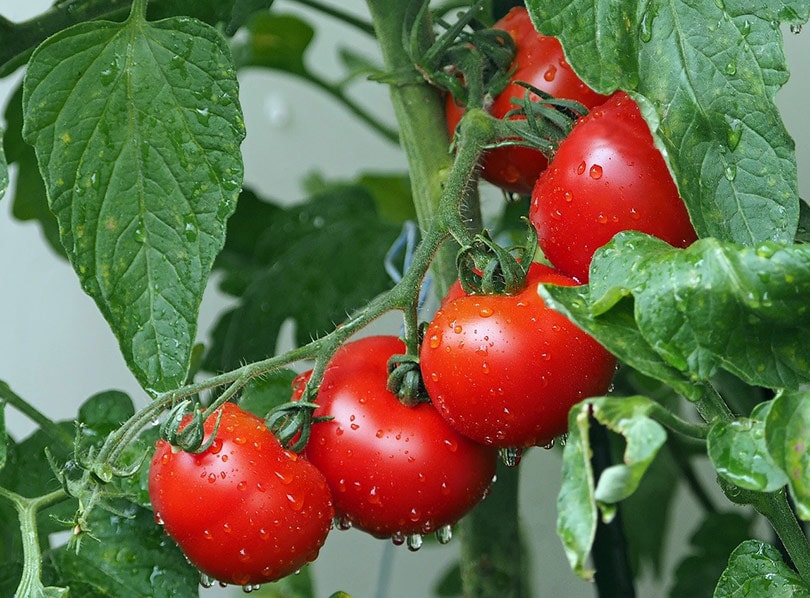
While tomatoes are a garden staple for many at-home gardeners, you really don’t want them growing near sweet potatoes. The problem with tomatoes and sweet potatoes is that they are susceptible to the same diseases. So, if the plants are near each other and one gets the disease, the other one likely will too.
If you put sweet potatoes and tomatoes at opposite ends of the garden, you help reduce this risk. But without significant space between the two plants, you’re not eliminating it entirely.
2. Sunflowers
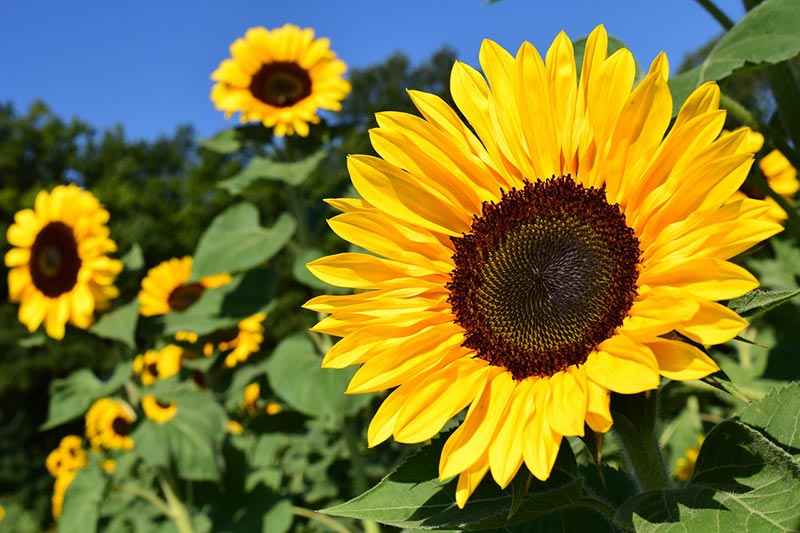
While some flowers do a great job of attracting pollinators, making them a great companion plant for sweet potatoes, you really don’t want to grow sunflowers near them. Sunflowers take up tons of root space that sweet potatoes need, making it more likely for sweet potato blight to spread.
3. Squash
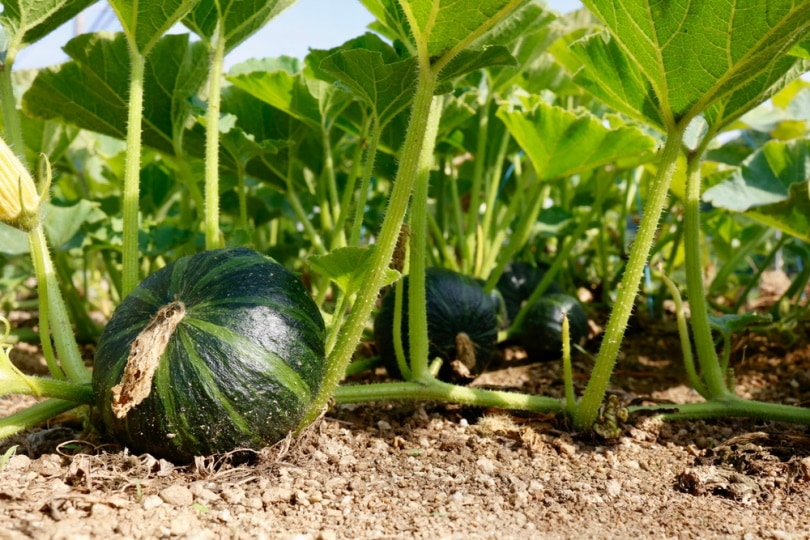
Squash takes up a ton of space, grows large fruits, and competes for the same nutrients that sweet potatoes use. That makes it a poor companion plant. In fact, if you decide to grow squash near your sweet potatoes, you’ll likely experience diminished yields from both plants.
Conclusion
Now that you know all about some of the best companion plants for sweet potatoes, all that’s left is for you to decide what companion plants will work best in your garden! Find something that works in your area, that you want to grow, and that you have space for.
And if you have the space and like a few of the options on our list, there’s no reason you can’t mix it up and grow more than one of the companion plants we highlighted here!
Featured Image Credit: Sergiy Akhundov, Shutterstock
Contents


